Showing 481–492 of 2529 resultsSorted by popularity
-
Sale!
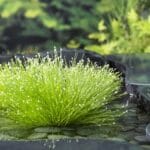
Isolepis Cernua 17cm Pot
Original price was: R165.00.R115.00Current price is: R115.00.Add to cartIsolepis Cernua 17cm Pot
Common Name: Fibre Optic GrassGrown for your pond, dam or fountain.
Photos are an example of the type of plant.
-
Sale!
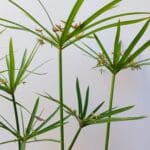
Cyperus Textilis 21cm Pot
Original price was: R235.00.R179.99Current price is: R179.99.Add to cartCyperus Textilis 21cm Pot
Common Name: Basket GrassGrown for your pond, dam or fountain.
Photos are an example of the type of plant.
-
Sale!

Colocasia Esculentes 21cm Pot
Original price was: R225.00.R174.99Current price is: R174.99.Add to cartColocasia Esculentes 21cm Pot
Grown for your pond, dam or fountain.
Photos are an example of the type of plant.
-
Sale!

Allium ‘Winter Fairy’ – 20 Bulbs Per Pack
Original price was: R120.00.R99.99Current price is: R99.99.Add to cartAllium ‘Winter Fairy’
PRE ORDERS ARE OPEN FOR WINTER BULBS. LIMITED STOCK AVAILABLE! STOCK TO ARRIVE MID TO END APRIL 2025!
20 Bulbs per pack
Semi Shade
Full SunCultivate Allium ‘Winter fairy’ in your garden for dainty and decorative green and white blooms.
Available: February March
Plant: March April
Flower: August SeptemberLead time of about 7 working days for our bulbs to come from the suppliers!
-
Sale!

Hyacinths Bulbs-Salmon
Original price was: R110.00.R84.99Current price is: R84.99.Add to cartHyacinths Bulbs-Salmon
PRE ORDERS ARE OPEN FOR WINTER BULBS. LIMITED STOCK AVAILABLE! STOCK TO ARRIVE MID TO END MARCH 2025!
3 Bulbs per pack
Semi ShadeHyacinths are true bulbs that grow to about 20cm in height. They can grow in most soils as long as it is well-drained to avoid roots from rotting. Plant these bulbs a little bit deeper than normal bulbs to avoid the sun from damaging the bulb.
Hyacinth will flower for a longer period if left outside at night for the cold air. If they do not receive enough light, the stems will stretch.Available: March April May
Plant: April May June
Flower: July August SeptemberLead time of about 7 working days for our bulbs to come from the suppliers!
-
Sale!
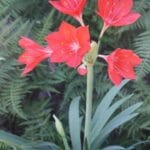
Cyrtanthus Elatus (George Lily) 4lt
Original price was: R95.00.R57.50Current price is: R57.50.Add to cartCyrtanthus Elatus 4lt
Common Name: George Lily -
Sale!
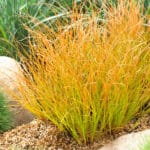
Carex Prairie Fire 4lt
All Plants, April Outdoor Plants On Sale, Full Sun Plants, Lawn and Grasses, Semi Shade Plants, Small Plants On Sale, What's NewOriginal price was: R95.00.R57.50Current price is: R57.50.Add to cartCarex Prairie Fire 4lt
Full Sun
Semi Shade
Low Watering
Evergreen -
Sale!

Lavender Margaret Roberts 4 Pack Tray
All Plants, Full Sun Plants, Hedging Plants, Indigenous Plants, Semi Shade Plants, Shrubs and BushesOriginal price was: R125.00.R89.99Current price is: R89.99.Add to cartLavender Margaret Roberts 4 Pack Tray
-
Sale!
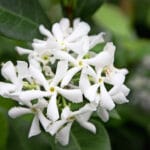
Star Jasmine 12cm Pot
Original price was: R65.00.R49.99Current price is: R49.99.Add to cartTrachelospermum Jasminoides 12cm Pot
Common Name: Star Jasmine -
Sale!
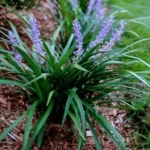
Liriope Muscari ‘Evergreen Giant’ 17cm Pot
Original price was: R125.00.R99.99Current price is: R99.99.Add to cartLiriope Muscari ‘Evergreen Giant’ 17cm Pot
Common Name: Lily Turf, Monkey GrassFull Sun
Semi Shade
Shade (slower growth in shade)
Medium Watering
Evergreen -
Sale!

Vachellia Xanthophloea 20lt
Original price was: R595.00.R399.99Current price is: R399.99.Add to cartVachellia Xanthophloea 20lt
Common Name: Fever tree, Koorsboom, Acacia XanthophloeFull Sun
Medium Watering
Indigenous
Wind TolerantThorn tree that grows up to 12m in height with paper=like bark and a flat spreading crown. They have light yellow flowers in Spring.
-
Sale!

Grewia Occidentalis 25lt Pot
All Other Fruits, All Plants, April Outdoor Plants On Sale, Full Sun Plants, Semi Shade Plants, Trees and Larger Plants On SaleOriginal price was: R650.00.R349.99Current price is: R349.99.Add to cartGrewia Occidentalis 25lt Pot
Common Name: Cross BerryGrewia occidentalis is a shrub or small tree native to Southern Africa. It belongs to the Malvaceae family and is known for its attractive foliage and edible fruits.
Growth Form
Grewia occidentalis can grow as a shrub or small tree, typically reaching about 3–5 meters in height. It has a bushy appearance with a spreading canopy.Leaves
The leaves are ovate, rough-textured, and have a greyish-green colour. They are arranged alternately and have a slightly velvety feel.Flowers
The plant produces small, five-petaled flowers that are usually pink to purple in colour. The flowers are quite attractive and are a favourite for bees and other pollinators.Fruit
The fruit of Grewia occidentalis is small, round, and orange-yellow in colour. It resembles a small mango, hence the common name “Wild Mango.” The fruit is edible and has a sweet, tangy taste but is often fibrous.Habitat
It is found in various environments, from savannas to rocky hillsides, and is well-adapted to dry, drought-prone areas. It can grow in well-drained soils and is often found in areas with seasonal rainfall.Uses
Culinary: The fruit is eaten raw, and in some cultures, it is made into jams, juices, or dried for later use.
Medicinal: In some parts of Africa, parts of the plant are used in traditional medicine for various ailments.
Ornamental: The plant is sometimes cultivated for its attractive flowers and fruit, especially in ornamental gardens or wildlife-friendly landscapes.Growing Conditions
Soil: Grewia occidentalis thrives in well-draining soils. It is drought-tolerant but benefits from regular watering during dry spells.
Sunlight: It prefers full sun to partial shade.
Temperature: It is suited to warm climates and can tolerate mild frost once established.Grewia occidentalis is relatively low-maintenance, making it a good choice for xeriscaping or for gardeners looking to grow a drought-resistant plant with aesthetic and functional benefits.
